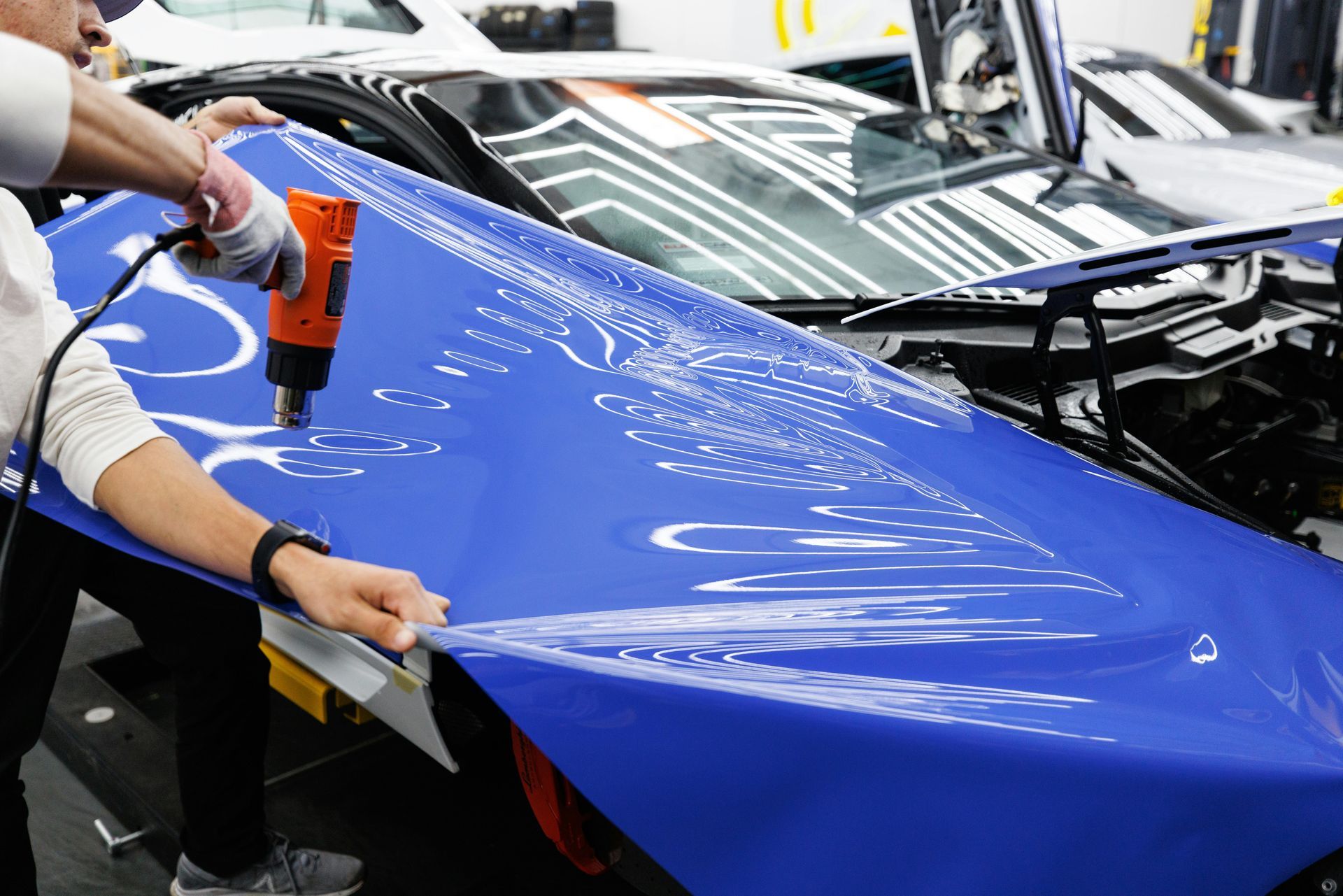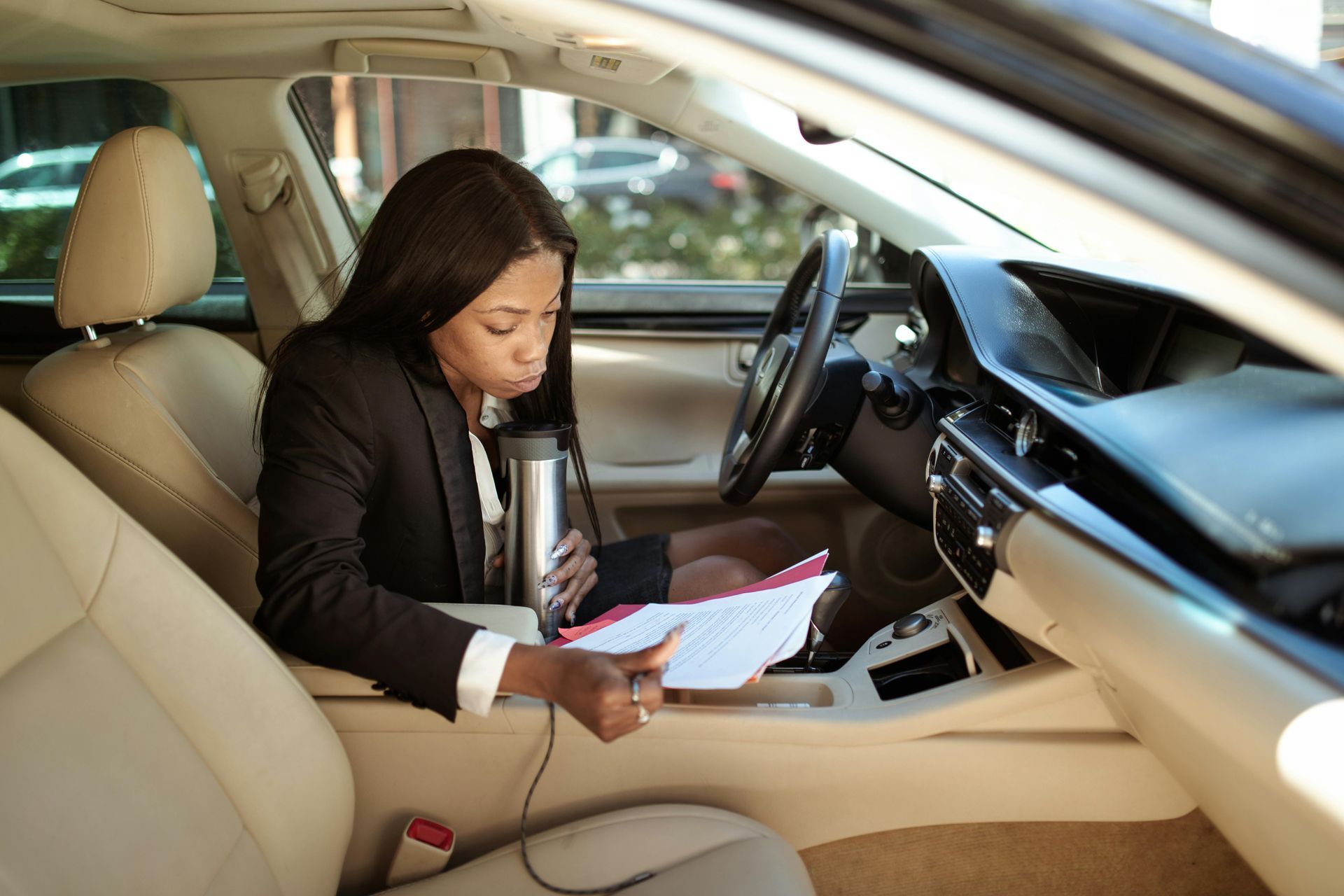Hidden Car Safety Features You Didn’t Know About
Cars Today Are Safer Than Ever – But Did You Know About These Hidden Safety Features?
Advanced Braking & Collision Avoidance – How Your Car Helps Prevent Accidents
Braking isn’t just about pressing the pedal anymore. Today’s cars are smarter than ever, and they come with systems that help prevent crashes before they even happen. That’s where Advanced Braking & Collision Avoidance Systems come in.
Let’s start with Automatic Emergency Braking (AEB). This system is designed to reduce rear-end collisions, which are some of the most common accidents on the road. Here’s how it works: Sensors in your car constantly monitor the traffic ahead. If the car in front of you suddenly stops and you don’t react fast enough, AEB automatically applies the brakes. It’s not just a little tap—it can bring the car to a full stop if necessary. This is a game-changer, especially in city traffic where stop-and-go movement makes rear-end crashes more likely.
Then there’s Brake Assist, which is all about making sure you get the most out of your braking system in an emergency. Believe it or not, most drivers don’t press the brakes hard enough when they need to stop suddenly. Maybe they panic or hesitate for a split second. Brake Assist detects this hesitation and applies extra braking force to help you stop as quickly as possible. This small difference in braking power can be the deciding factor between a close call and an actual crash.
Finally, we have Forward Collision Warning. Unlike AEB, this system doesn’t hit the brakes for you, but it does warn you if a crash is about to happen. If your car senses that you're getting too close to the vehicle ahead, it will flash a warning on the dashboard, beep loudly, or even vibrate the steering wheel. This gives you those critical extra seconds to react and avoid a collision altogether.
Put all these systems together, and they make a huge difference in keeping drivers safe. They’re not just conveniences—they’re lifesaving features that can prevent accidents or reduce their severity.
Hidden Airbag Innovations – More Protection Than You Realize
When you think of airbags, you probably imagine the front airbags that inflate in a crash to protect your chest and face. But today, airbags have come a long way. Some are hidden in places you might never expect, offering extra protection in situations you wouldn’t normally think about. Let’s dive into some of the most innovative airbag technologies that are helping keep you safe on the road.
Knee Airbags – Protecting Your Legs in High-Speed Crashes
In a crash, your knees can be at serious risk. Without proper protection, your knees could slam into the dashboard, causing painful and sometimes life-changing injuries. That’s where knee airbags come in. These airbags inflate under the dashboard, cushioning your knees to reduce the impact. It’s a small detail, but in high-speed crashes, it can make a big difference in preventing leg injuries, giving you a better chance of walking away unharmed.
Side Curtain Airbags – A Life Saver in Rollovers
Rollovers are some of the most dangerous accidents, especially for taller vehicles like SUVs. During a rollover, your head and neck are at serious risk of hitting the windows, roof, or even flying objects. This is where side curtain airbags step in. These airbags deploy from above the doors, creating a shield around your head to prevent injuries during a rollover. While side airbags protect your torso during side impacts, side curtain airbags focus on your head and neck, giving you extra protection during these extreme situations.
Rear Passenger Airbags – Extra Protection for Your Loved Ones
We’re all used to seeing airbags in the front seats, but did you know that some luxury family vehicles offer rear passenger airbags as well? These airbags are designed to protect passengers sitting in the back, especially children or other vulnerable passengers. They can be built into the seat or deploy from the roof, offering extra safety for anyone in the rear seats. It’s just one more way that modern cars are looking out for your loved ones in the backseat, adding that extra layer of safety to keep everyone protected.
These hidden airbag innovations might not be the first thing you notice, but they play a critical role in keeping drivers and passengers safe. From protecting your knees in high-speed crashes to safeguarding the backseat, these features go above and beyond the standard airbag. So next time you’re in a car, remember that safety doesn’t just stop at the steering wheel—it’s all around you.
Hidden Structural Safety Features – How Your Car Protects You from the Inside
When we talk about car safety, we often think about the visible features like airbags or seat belts. But the real magic happens underneath, in the way a car is built to absorb impact and protect its occupants. Let’s explore some hidden structural safety features that work behind the scenes to keep you safe in a crash.
Crumple Zones – Absorbing Impact Energy
Have you ever wondered why some parts of your car are softer or designed to crush in a crash? That’s because of crumple zones. These are areas built into the front and rear of your car that are designed to absorb the energy from a collision. When your car crashes, the crumple zones compress and deform in a controlled way, slowing down the impact and spreading the force over a longer time. This helps protect you and your passengers by reducing the amount of force that reaches the cabin. It’s all about giving you extra time to react and stay safe.
Reinforced Safety Cages – The Backbone of Crash Protection
One of the most important structural features in any car is its safety cage. Think of it like a strong, protective shell that surrounds you. The safety cage is made from high-strength steel and is strategically reinforced to prevent the cabin from collapsing during a crash. It keeps the space around you as intact as possible, ensuring that the airbags and seat belts can do their job without being compromised. That’s why the best crash-test-rated cars rely so heavily on reinforced safety cages—they maximize the protection of passengers during a collision, even if the outer parts of the car are damaged.
Active Hood Systems – Protecting Pedestrians
Here’s something many people don’t know: cars are designed to protect pedestrians too. In some newer cars, active hood systems are built to raise the hood in the event of a collision with a pedestrian. This helps reduce the severity of the impact by creating extra space between the hood and the engine, softening the blow and minimizing the risk of injury to the person who’s been hit. It’s a clever, thoughtful design feature that helps make cars safer for everyone—not just those inside the vehicle.
Smart Driving Assistance You Might Not Know About – The Future of Safer Driving
We all know about the basics of driving, but today’s cars come packed with advanced technology that makes driving safer. Here are a few smart driving assistance systems that go above and beyond to keep you on track, even when you might not be paying full attention.
Blind-Spot Monitoring – More Than Just a Flashing Light
Blind-spot monitoring is a game-changer when it comes to changing lanes, but it’s much more than just a flashing light on your side mirror. This system uses sensors to constantly scan the area around your car, specifically looking for vehicles that are in your blind spots. If you signal to change lanes and there’s a vehicle you can’t see, the system will alert you—often with a flashing light in the side mirror or a warning sound. What’s even cooler? Some systems will steer your car back into the lane if you start to drift into a blind spot without realizing it. It’s like having a co-pilot who’s constantly watching out for you, making your drives a lot safer, especially on highways or busy city roads.
Rear Cross-Traffic Alert – Protecting You When Backing Out of Parking Spaces
One of the scariest moments while driving is when you’re backing out of a parking space and can’t see if other cars or pedestrians are coming from the sides. Rear cross-traffic alert is here to help. This system uses sensors at the back of the car to detect any vehicles or people coming from the side while you’re reversing. If it detects something, it will alert you with an audible warning or visual alert on the dashboard. Some systems even have automatic braking to help stop the car if you don’t react in time. This technology is a lifesaver in parking lots and tight spaces, ensuring you don’t accidentally back into another car or pedestrian.
Lane-Keeping Assist – Helping You Stay in Your Lane
Ever found yourself drifting out of your lane without realizing it? Whether you’re tired or distracted, it’s easy to wander off track. Lane-keeping assist helps prevent that by monitoring the lanes on the road with cameras and sensors. If you unintentionally start drifting over the line, the system will gently steer your car back into its lane. It’s like having a personal driving coach that keeps you focused and ensures you don’t veer off course. This system can also be super helpful during long highway drives, making it easier to stay within your lane without constant steering adjustments.
Hidden Child & Passenger Safety Features – Keeping Your Loved Ones Safe
When you’re on the road, the safety of your family and passengers is always top priority. Car manufacturers have developed some innovative features to protect children and keep passengers secure, whether they’re in the front or the back. These safety features are hidden in plain sight, providing extra layers of protection you might not always think about.
Rear Seat Reminder – Preventing Child Heatstroke Incidents
As a parent, the last thing you ever want to worry about is forgetting your child in the backseat on a hot day. Rear seat reminder systems are designed to prevent tragic heatstroke incidents. This system uses sensors that detect when the back doors are opened before or during a trip. When you stop the car, the system will remind you to check the backseat. Some vehicles even go further, triggering a visual or audible alert if the rear doors are opened but not closed. It’s a simple feature, but it can make a huge difference in preventing those devastating accidents that happen when a child is accidentally left in a car on a hot day.
LATCH System – The Safest Way to Secure Child Car Seats
You’ve probably seen the LATCH system in your car, but do you know how important it is for keeping your child safe? LATCH stands for Lower Anchors and Tethers for Children—and it’s the easiest, safest way to secure child safety seats. Rather than relying on seat belts to hold the seat in place, the LATCH system uses built-in anchors in the vehicle to securely attach the car seat. It makes it easier to install and reduces the risk of a loose or improperly secured car seat, which could lead to injury in the event of an accident. Some vehicles also have top tethers that provide extra stability for forward-facing seats, further improving the overall safety of the child seat.
Automatic Locking Retractors (ALR) – Keeping Passengers Securely Buckled
The Automatic Locking Retractor (ALR) is an often-overlooked safety feature that keeps everyone in your car secure. This system works with your car’s seatbelts to ensure that once a seatbelt is pulled tight, it locks into place. This prevents the seatbelt from loosening or shifting during a crash, keeping passengers safely secured. For kids and child seats, the ALR system prevents the seatbelt from loosening, ensuring the child car seat stays in place even during sudden stops or impacts. The ALR is especially important because it ensures that seatbelts remain as tight and secure as they need to be, reducing the chances of injury in a crash.
Alright, let’s wrap it all up with a look at safety ratings and how IIHS Top Picks help us choose the safest cars on the market. This is a crucial part of understanding what makes a car truly safe, and how the Insurance Institute for Highway Safety (IIHS) goes above and beyond to test vehicles to ensure they meet the highest standards. Let’s break down the importance of safety ratings and how they guide you to make the best choice for your family’s safety.
The Role of Safety Ratings & IIHS Top Picks – Why They Should Matter to You
When it comes to buying a new car, safety is often the first thing on your mind, and for good reason. After all, a car is not just a mode of transport—it’s a protective shield that keeps you and your loved ones safe on the road. So, how do you know if a car will truly protect you in a crash? That’s where safety ratings and the IIHS Top Safety Picks come in.
How the Insurance Institute for Highway Safety (IIHS) Tests Vehicles
The IIHS is a non-profit organization that is dedicated to evaluating the safety performance of vehicles. They conduct a series of rigorous crash tests to simulate real-world scenarios that could happen in accidents. These tests include frontal offset crashes, side-impact crashes, rear-impact crashes, and roof strength tests. They also assess how well a car’s headlights illuminate the road and whether advanced safety features like lane-keeping assist and automatic emergency braking work effectively. The IIHS gives cars a score for each test, ranging from "Good" to "Poor", so you can easily see how a vehicle measures up in terms of crashworthiness and overall safety.
What Makes a Vehicle an IIHS Top Safety Pick
The title of IIHS Top Safety Pick is reserved for vehicles that excel in their safety tests. To earn this prestigious rating, a car must receive the highest scores in all crash tests, including frontal, side, and roof strength tests. Additionally, the vehicle must be equipped with certain advanced safety features, such as automatic emergency braking, lane-departure warning, and pedestrian detection. Finally, the car needs to have acceptable or better-rated headlights—because no matter how safe a car is in crashes, it’s still crucial to see clearly at night. If a car meets all these criteria, it earns the coveted IIHS Top Safety Pick or Top Safety Pick+ designation. This gives you peace of mind, knowing that the vehicle has passed the most stringent safety tests and comes with cutting-edge features to protect you on the road.
Why Checking Crash-Test Ratings Matters When Buying a New Car
Before you make a decision on your next vehicle, it’s always smart to check the crash-test ratings and see how a car fares in safety tests. Vehicles that earn high safety ratings are more likely to keep you safe in the event of an accident. Whether you’re driving in the city, on the highway, or in rough conditions, you want a car that will absorb impact, protect the cabin, and prevent injury. IIHS ratings give you a clear picture of how well a car is built to protect its occupants during real-world collisions. By choosing a vehicle that has earned an IIHS Top Safety Pick, you’re not just buying a car—you’re investing in your safety and the safety of everyone who rides in it.














